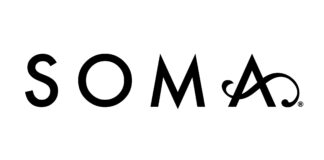For years, China has been the undisputed leader of toy manufacturing globally. The country accounts for around 75 percent of the toy supply globally, with just one district, Chenghai accounting for almost 30 percent of the global toys produced. Even high-end toy manufacturers have depended on China for outsourcing manufacturing. For example, Mattel Group, known for manufacturing toys such as Barbie and Hot Wheels, produces around 74 percent of its products in the country.
By Business Briefs
India has not been immune to Chinese toy imports, with around 80 per cent of toys in India being imported. China alone accounted for 70 per cent of India’s toy imports. India’s bottom-heavy population pyramid also means that more than a quarter of our population is under the age of 14. Clearly, India has a huge toy market, most of which have been captured by Chinese toys. But with decisive government action, India has been able to break away from its dependence on China.
Like almost every sector in China, the toy sector has been supported by government policies such as subsidies, incentive schemes, and quick and low-cost loans to grow the business. As a result, the toy industry grew rapidly as manufacturers continued establishing new manufacturing plants.
For a long time, “Made in China” has been synonymous with low-quality, cheap products due to a lack of standards and regulations. While industries have mushroomed quickly, the focus has been on manufacturing cheap rather than quality goods. The toy industry was no exception, with Chinese toys often viewed as cheap and low-quality. But, the problems ran much deeper.
Chinese toys were found to be highly toxic for children since they contained heavy metals such as lead and cadmium and compounds like phthalates. Since children spend a long time with toys, often chewing or mouthing them, these toxins could have a serious impact on their health condition.
In October 2021, United States Customs seized a consignment of Chinese toys that contained high levels of Lead, Barium and Cadmium, three toxic elements. In 2009, India too implemented a ban on Chinese plastic toys for half a year after finding them to be unsafe for children.
Despite several attempts to curb imports of Chinese toys, they continued flooding the Indian markets for years. Given their low cost and a general lack of awareness about their toxicity, the sales of Chinese toys continued growth in India.
In order to curb the import of toxic toys, India imposed the Toys Quality Control Order to improve the quality of toys in the Indian market. Now, toys sold in India for kids less than 14 years of age are required to have an ISI mark, to approve of the toys’ quality.
Due to Covid pandemic, Chinese manufacturers couldn’t get their plants certified, while Indian manufacturers could get themselves certified much more quickly. In addition, the government increased the import duty on toys from 20 percent to 60 percent. But, since China is covered under the Asia Pacific Trade agreement, the actual duty for China turned out to be around 34 percent. Nevertheless, the impact of these changes, along with supply-chain issues, resulted in imports of toys into India almost halving.
Indian toy manufacturers have already reported that their revenues have increased significantly after the steps taken by the government to dis-incentivise toy imports into the country.
Recently, India’s first toy cluster established by Aequs Private Limited began production at its first unit, with others to follow.
Indian toy sector still face issues since manufacturers do not specialise in higher-end toys such as electronic toys.
The Indian manufacturing sector has focused on low- to mid-technology products with relatively lower value addition. China has a strong electronics industry, which allows toy companies to source the materials required to manufacture these toys.
Indian toy manufacturers have reportedly cited high duty on the import of machines from countries like Korea and Japan as the reason for the low production capacity of electronic toys. In addition, there aren’t many players that operate on a large scale in the sector, with many small companies operating in the space. These companies are finding it difficult to meet the necessary standards imposed on the toys they manufacture. So, while toy imports might have been curbed with the government’s help, meeting the increasing demand for toys will depend on whether Indian manufacturers can catch up quickly.
This article first appeared in www.swarajyamag.com and it belongs to them.








